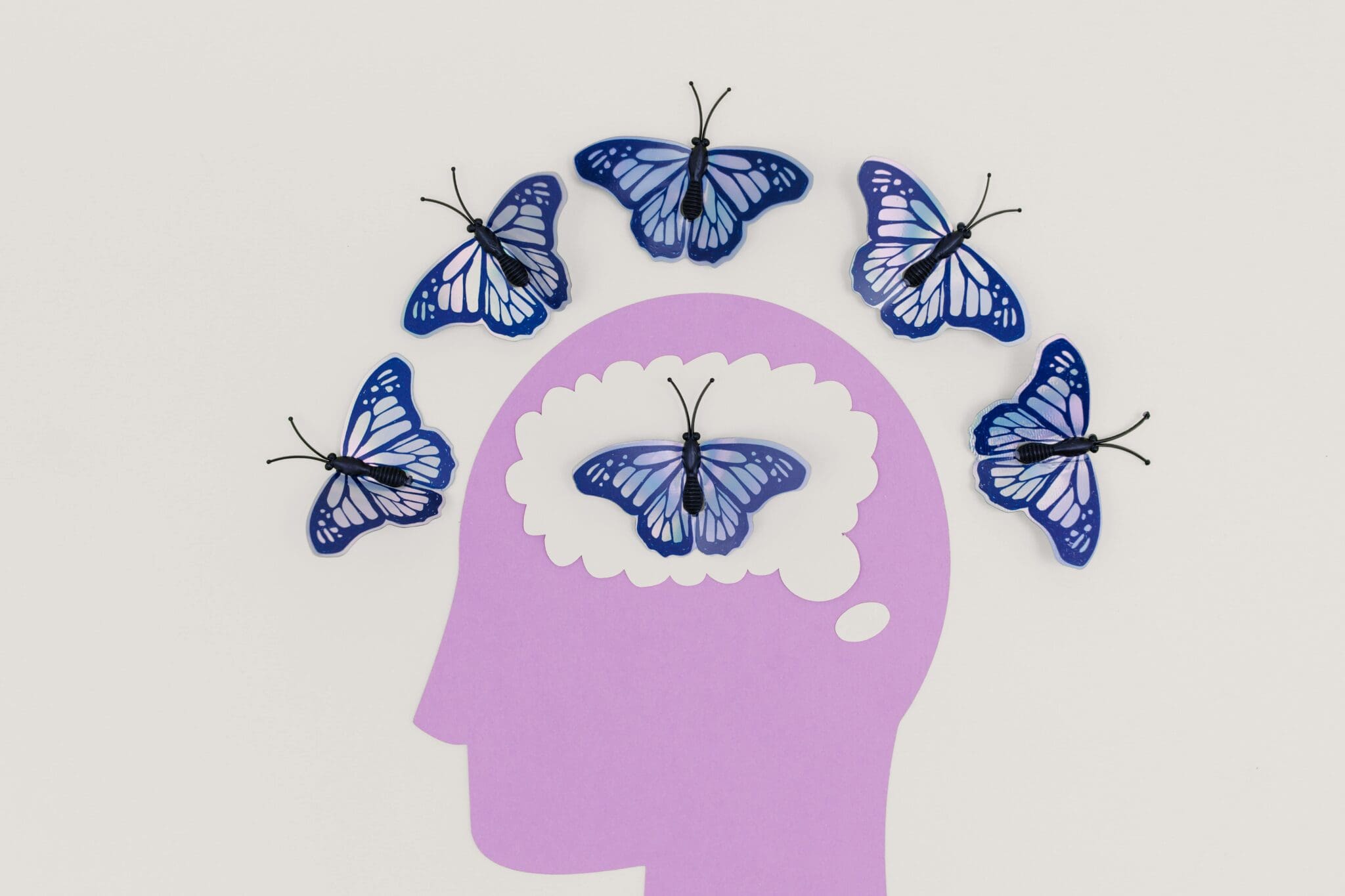Full Disclosure: Clicking on these links could mean a tiny commission for me, at no extra cost to you.
Did you know that our amazing brains have the ability to change and adapt throughout our lives? Yup, it’s called neuroplasticity, and it’s a game-changer for anxiety relief. While traditional treatments such as therapy and medication can be effective, they may not work for everyone or provide long-term relief. Recent studies have shown that it’s possible to rewire the brain to alleviate anxiety symptoms using neuroplasticity, the brain’s ability to change and adapt. By engaging in specific neuroplasticity practices and techniques, you can transform their brains and reduce anxiety symptoms, leading to a better quality of life. In this article, we will explore the latest research on neuroplasticity and anxiety relief and provide practical tips for rewiring the brain to overcome anxiety.
What is Neuroplasticity?
Neuroplasticity refers to the brain’s ability to change and adapt throughout a person’s life. It involves the brain’s ability to reorganize itself by forming new neural connections, modifying existing ones, and adjusting the strength of connections between neurons. This process occurs in response to changes in the environment, experiences, behaviors, thoughts, and emotions. Neuroplasticity allows the brain to learn, adapt to new situations, and recover from injury or trauma. It is a complex and dynamic process that underlies learning, memory, and behavior, and it offers promising new avenues for the treatment of various neurological and mental health conditions, including anxiety, depression, and addiction.
Neuroplasticity and Anxiety
Your neuroplasticity for anxiety has created these connections between your anxiety trigger and your brain’s natural flight or fight reaction. Every time you have an anxiety or panic attack due to a specific situation, atmosphere, object, etc., your body strengthens that connection with furthers your anxiety.
For example: You have a panic attack in a restaurant; your brain creates a connection between the restaurant and the panic.
Additionally, neural fatigue can exacerbate this process, making it more challenging to break anxiety-trigger associations. The repeated exposure to anxiety-provoking stimuli reinforces these connections, leading to heightened responses in similar situations.
Fortunately, recent studies have shown that your brain can be rewired through neuroplasticity, which means that you’re able to delete those negative brain connections to further improve or even eliminate anxiety altogether.
Benefits of Neuroplasticity for Anxiety
The benefits of neuroplasticity for anxiety are absolutely mind-blowing. Pardon the pun. It is, arguably, one of the best forms of natural anxiety relief and even presents the possibility that mental illnesses can be cured naturally as well. Here are a few of the best benefits of neuroplasticity for anxiety and why it’s important to rewire your brain to improve your mental health:
- Delete brain connections between fear and triggers
- Change your habits
- Reduce stress to improve mental health
- Ability to reconstruct your brain to be less anxious
- Change the way your brain reacts to certain situations
- Increase positivity and optimism
- Reduce/eliminate negativity and pessimism
- Alleviate symptoms of anxiety
- Eliminate anxiety
- Change the way anxiety affects you
How to Use Neuroplasticity for Anxiety Relief
Rewiring your brain connections may seem like a difficult task, but it’s actually one of the easiest natural forms of anxiety relief. You just need to use certain neuroplasticity techniques which strengthen and change your brain activity.
Here are some techniques that you can start right away.
1. Meditation for Neuroplasticity
A study conducted by the University of Wisconsin showed that meditation naturally and beneficially increases the brain’s “gray matter” by harnessing the potential of your brain’s neuroplastic.
The brain’s “gray matter” contains the majority of your brain’s neurons and is highly involved in sensory perception. In other words, the way you see, smell, feel, communicate, make decisions, remember, etc.
Meditation can change the negative sensory perceptions that have been ingrained in your brain due to having anxiety, while strengthening positive ones.
2. Binaural Beats
We’ve talked a lot about binaural beats, as they have proven to have a positive affect on the brain. This neuroplasticity technique is also one of the easiest exercises, as it requires you to do nothing more than simply listening to relaxation music that plays different tones in separate ears to trigger a positive response in the brain.
3. Positive Mindset
When you’re disengaged, negative or lacking motivation, the brain’s plasticity shuts down. So, it’s important to have a positive mindset to unleash the potential of neuroplasticity for anxiety.
You’re likely thinking that this is often easier said than done. After all, you don’t choose to be in a bad mood. However, you can choose to practice exercises and techniques that induce feelings of positivity.
Something as simple as using affirmations and mantras for anxiety can drastically improve neuroplasticity for anxiety.
4. Practice Mindfulness
Studies have shown that mindfulness has powerful – and positive effects in the brain. It has been proven that by practicing mindfulness, you can increase the area in your brain that reflects positive emotions, which decreases stress and negativity while also promoting positivity and anxiety relief.
5. Yoga
With the prior mentioned, this technique of neuroplasticity for anxiety shouldn’t come to you as a surprise. Yoga combines mindfulness, positivity, meditation, affirmations and daily exercise into one, offering a powerful way to rewire the brain. There are several types of yoga you can try, with some being the best for anxiety relief.
Other Tips to Use Neuroplasticity To Relieve Anxiety
Here’s how you can leverage neuroplasticity for anxiety relief :
- Cognitive-Behavioral Therapy (CBT)
This therapy for anxiety disorders targets irrational thoughts and beliefs, which aids in the development of healthier cognitive patterns and coping strategies.
- Neurofeedback
Real-time monitoring of brain activity through an electroencephalogram (EEG) helps reduce anxiety symptoms by controlling brainwave activity.
- Physical Exercise
This activity promotes the release of endorphins, which improves mood and reduces stress. It also enhances brain function and promotes neuroplasticity.
- Creative Expression
Engaging in art, music, or writing provides an outlet for emotions. These aid in processing and coping with feelings. It stimulates different brain areas, fostering neuroplasticity.
- Social Support
Strong social connections reduce feelings of isolation and loneliness, common anxiety triggers. Positive social interactions release oxytocin, which promotes bonding and reduces stress.
- Nutrition and Lifestyle Changes
A balanced diet rich in brain-supporting nutrients and stress management techniques like deep breathing and adequate sleep hygiene positively impact mood and well-being, promoting neuroplasticity.
Using neuroplasticity exercises for anxiety relief can be a powerful tool for transforming your brain and reducing anxiety symptoms. By engaging in practices and techniques that promote neuroplasticity, such as mindfulness, cognitive-behavioral therapy, and physical exercise, individuals can rewire their brains and create lasting changes that improve their mental health and overall quality of life. Remember, the brain is incredibly adaptable, and with the right approach, anyone can harness the power of neuroplasticity to overcome anxiety and lead a happier, healthier life.









